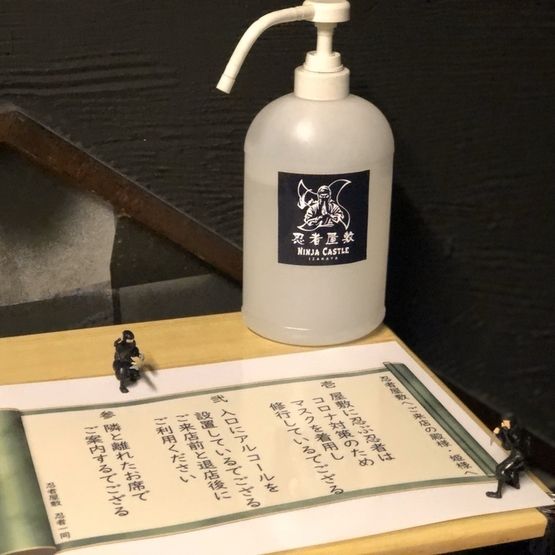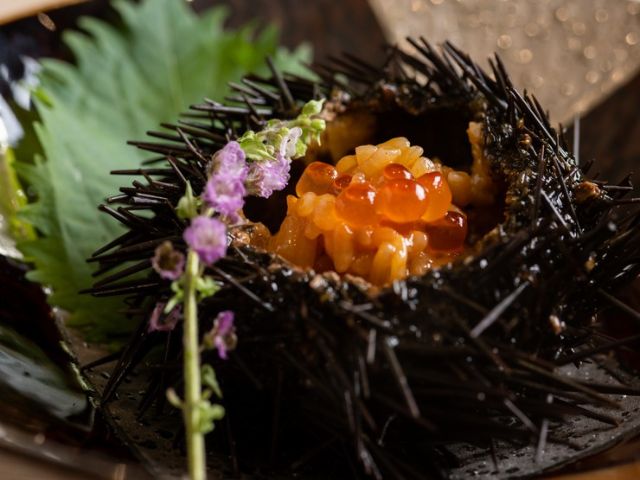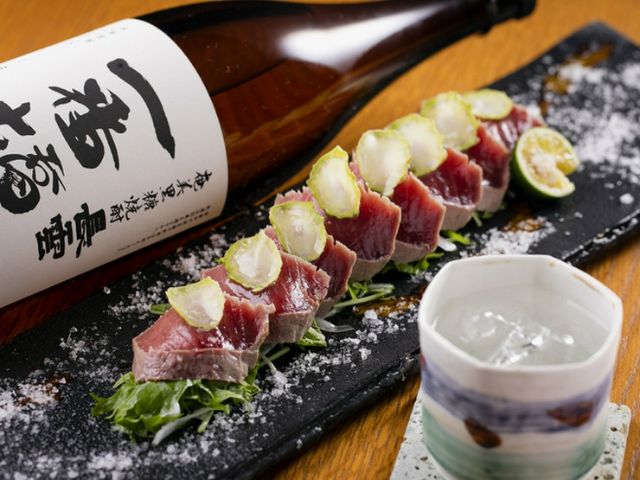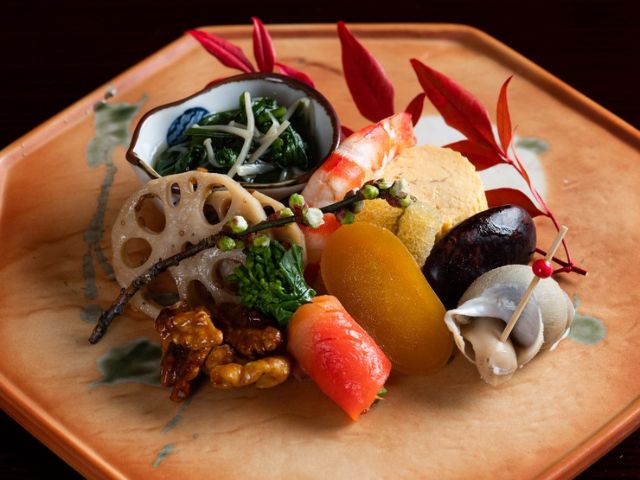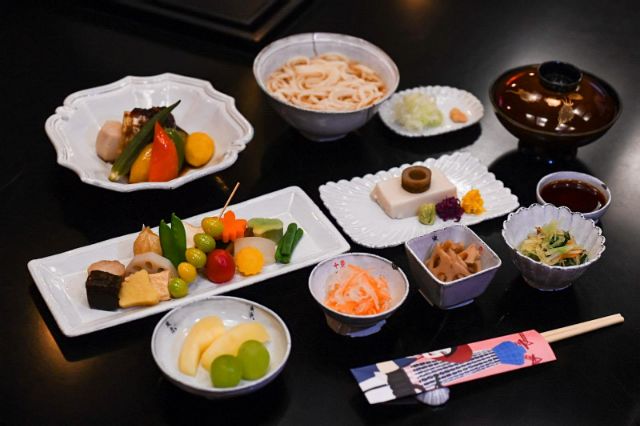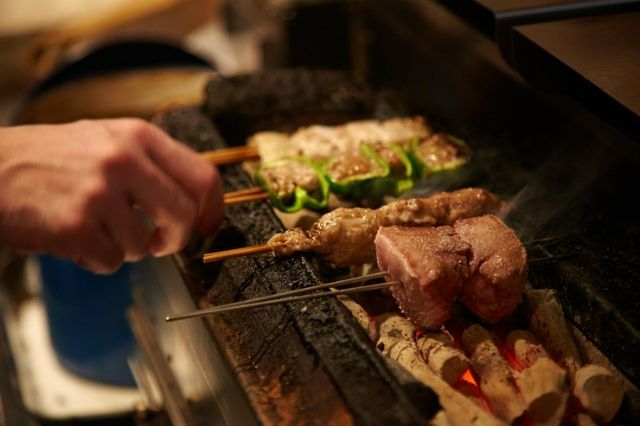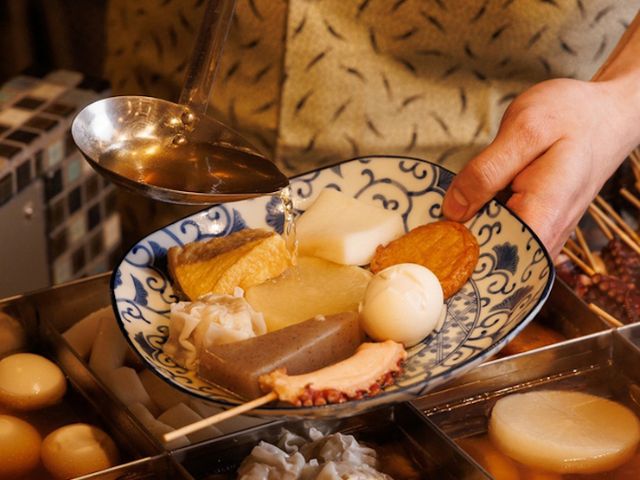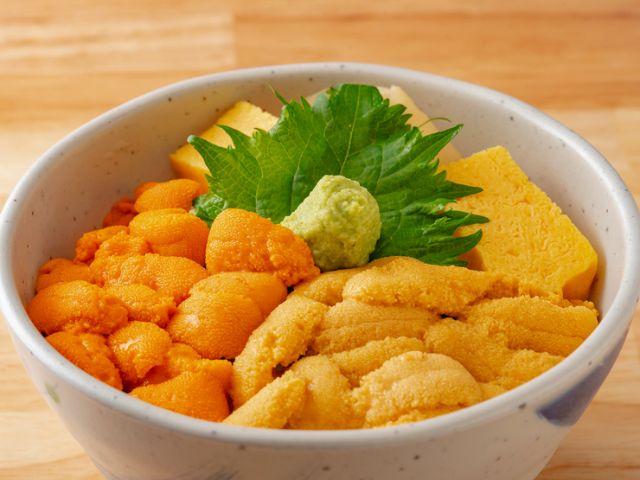A Surprisingly Harmonious Union: Delight in the Pairing of Wine and Japanese Cuisine in Tokyo!
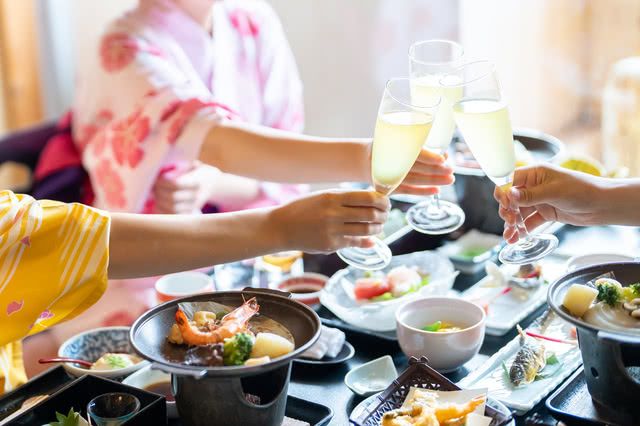
Finding the Best Wines to Match with Washoku
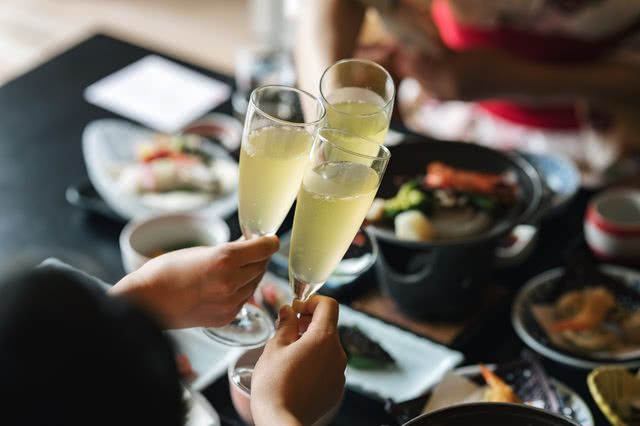
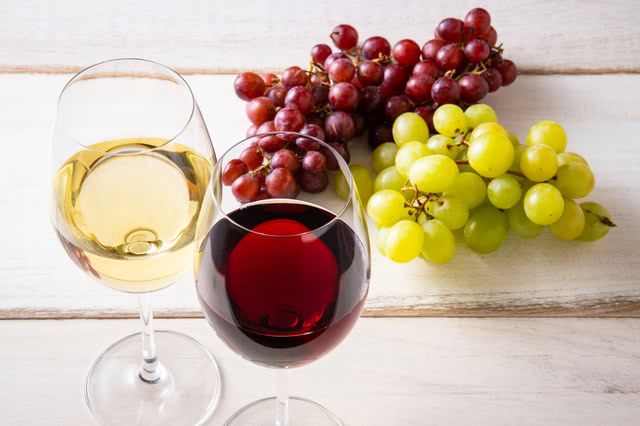
For instance, white wines are an excellent choice for pairing with pale-colored dishes such as white-fleshed fish that has been prepared as sashimi or grilled and tofu-based fare.
On the other hand, red wines can be broken down into the three following categories: full-bodied, medium-bodied, and light-bodied. Fruity, light-bodied red wines are a delightful match for "shabu shabu," a dish where beef and/or pork are quickly cooked in steaming hot water and seasoned with sauces like ponzu," a citrus-flavored soy sauce, or creamy sesame sauce. For dishes with a richer flavor, such as "sukiyaki," a Japanese hot pot stew; chicken "teriyaki," where the chicken is basted with a rich sauce and fried or grilled; and other hearty options, a deep, full-bodied wine would be your best choice.
Japanese Wines Gaining High Acclaim Worldwide
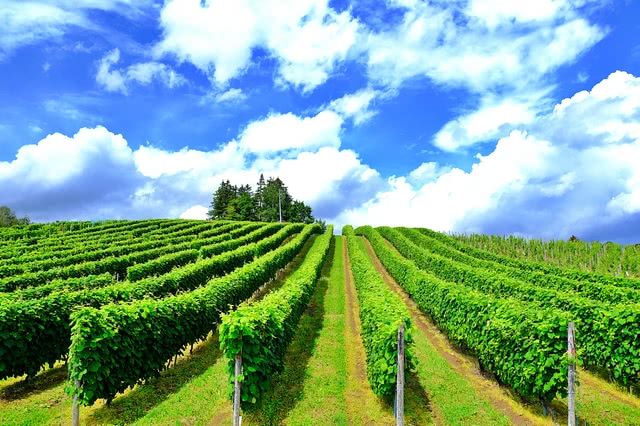
One example is the Grace "Cuvée Misawa Akeno Koshu" 2013, produced in Yamanashi Prefecture. In 2014, it made history as the first Japanese wine to earn a gold medal as well as the Regional Trophy in the esteemed Decanter World Wine Awards, a globally renowned wine competition, garnering attention from Japan and overseas! More recently, the "Château Mercian Fuefuki Koshu Gris de Gris, 2019" was awarded Gold at the International Wine Challenge 2021.

If you are looking to pair washoku with wines crafted from grape varieties limited to Japan, here are a couple of recommendations worth exploring. The first is "Koshu," renowned for its delicate Japanese citrus aroma, and then there is "Muscat Bailey A," boasting a strawberry scent that beautifully complements the flavors of soy sauce.
Explore Wine Pairings with Japanese Dishes Popular Among Global Travelers!

・Sushi
With the wide variety of sushi variations, there is a diverse option of wine pairings.
"Hirame" (Japanese flounder), "tai" (sea bream), and other white-fleshed fish go well with an acidic white wine with robust tartness, while scallops and squid boasting a distinct sweetness are best paired with sweeter variations of white wine.
Tuna and other red-fleshed fish harmonize beautifully with fresh and light red wines that are low in tannins.
The choice of wine also depends on the condiments used. When enjoying sushi with soy sauce, go for a light-bodied red wine. If seasoning with salt, opt for white. If your sushi topping is "anago" (saltwater eel) seasoned with a sweet sauce, fruity red wine is a delightful match. If you want to relish an array of sushi toppings, sparkling wine is a good way to go.
・Sukiyaki
Sukiyaki is a type of hot pot dish made with beef and vegetables stewed in a savory mixture of soy sauce, sugar, and cooking sake. Red wine normally pairs wonderfully with this dish, but you should consider the fat content of the beef to achieve the perfect combination.
If you are enjoying marbled beef, mature Pinot Noir red wines with notes reminiscent of soy sauce will blend smoothly with the meat. There are lovely red wines of the Pinot Noir variety from Hokkaido.
Red wines that are spicy or highly astringent will go best with leaner red meat.
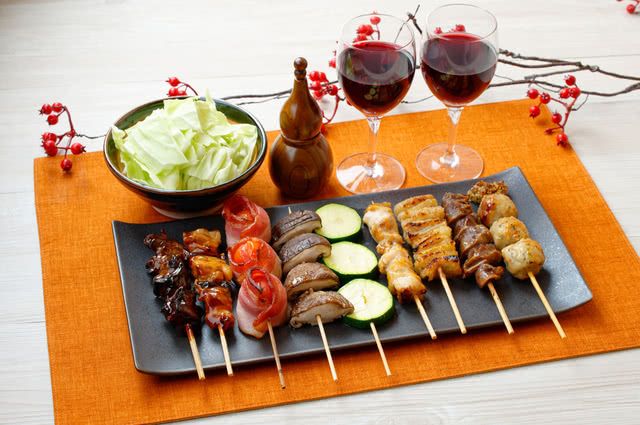
Yakitori, the charcoal-grilled chicken skewers popular among locals, pair wonderfully with alcoholic beverages, making them a staple in many "izakaya" eateries.
For yakitori, the best way to select a wine to pair is to consider whether it is seasoned with salt or a sweet sauce, as well as the cut of the chicken.
Salt-seasoned chicken goes well with white wines, especially those produced in coastal regions. Chicken skewers flavored with a rich, sweet, and salty sauce will pair excellently with similarly rich and sweet red wine.
・Tempura
Tempura is vegetables and seafood that have been battered and fried. It is best enjoyed dipped in salt, or "tentsuyu," a sweet, soy sauce-like sauce.
The choice of wine depends on how you want to season the tempura. If you are using salt, then go for a dry white wine. If you prefer to add lemon or other citrus juice, then opt for a white wine with citrus scents. If you are dipping the tempura into tentsuyu, light-bodied red or rose wines will go well with the rich umami of the sauce.
Restaurants for Enjoying the Perfect Fusion of Wine and Washoku
Matoi Ginza (Ginza)
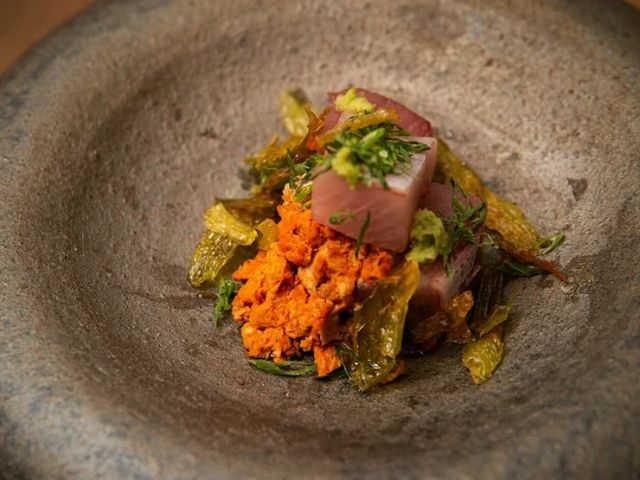
The executive chef, with experience in acclaimed hotels worldwide, brings a touch of originality to the dishes that makes them truly unique to this establishment. Among their highlights is the highly recommended Sashimi with Seasonal Fresh Fish. Instead of the usual soy sauce or salt, the dish is complemented with a sauce that showcases the flavors of the natural ingredients and other spices.
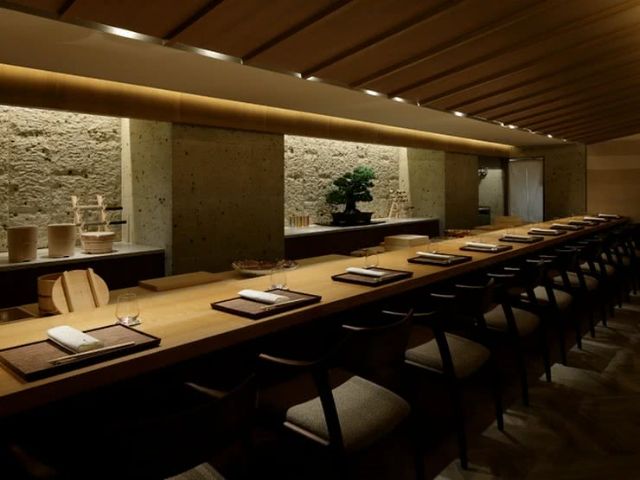
Matoi Ginza
Closed: Sunday, National Holidays
Average price: [Dinner] 35,000 JPY
Access: 4-minute walk from Exit B6 of Ginza Station on the Tokyo Metro Ginza Line. 7-minute walk from the Central Exit of Yurakucho Station on the JR Yamanote Line
Address: 7F, HULIC&New GINZA NAMIKI 6, 6-6-5, Ginza, Chuo-ku, Tokyo Map
More Details Reservation
Ginza Ishizuka (Ginza-itchome)
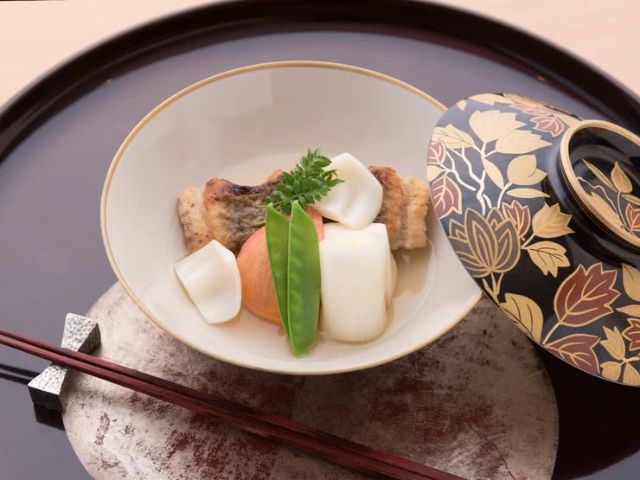
Ginza Ishizuka offers delectable seasonal fare prepared by the owner-chef, who trained at prestigious Japanese restaurants. With meticulous care and a keen eye for raw ingredients, he sources vegetables freshly harvested that morning and airships in freshly hauled fish.
Here, you can appreciate the delicately complex flavors of washoku. One of the signature dishes is the Lightly simmered tonguefish, where the fish is lightly grilled before being simmered to offer exquisite savory umami.
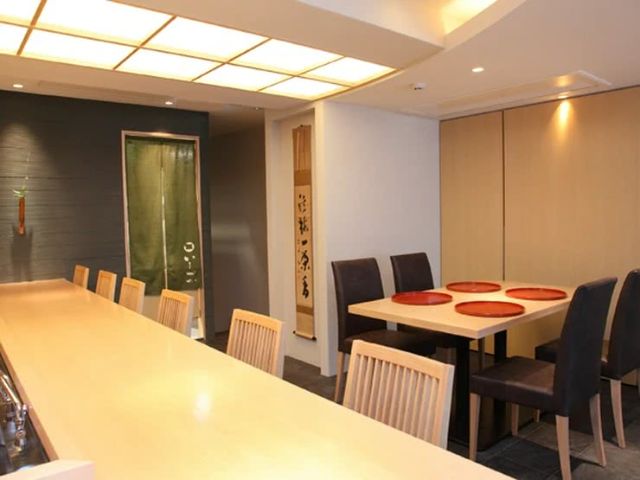
Ginza Ishizuka
Closed: Sundays
Average price: [Dinner] 15,000 JPY / [Lunch] 2,500 JPY
Access: Tokyo Metro Yurakucho Line, Ginza Ichome Station, 1 minute walk from exit number 10. After exiting, turn left at the Family Mart. It's on your left.
Address: Habiuru Ginza 5F, Ginza 1-13-8, Chuo-ku, Tokyo Map
More Details Reservation
Disclaimer: All information is accurate at time of publication.
Thank you for reading our article.
Our goal is to take your culinary journey to the next level by helping you find the best restaurant. With SAVOR JAPAN, you can search and make reservations for
the Wine and Japanese Cuisine restaurants found in and around Ginza that fill your needs.
Discover more Wine and Japanese Cuisine restaurants by area
- Tokyo Area
- Near Tokyo
- Kyoto and Osaka Area
- Hokkaido Area
- Northern Honshu (Tohoku)
- Central Honshu (Chubu)
- Western Honshu (Chugoku)
- Shikoku
- Kyushu
- Okinawa and Ryukyu Islands
Discover more restaurants to eat Alcohol and Japanese Cuisine by area
Keywords
Related Articles
New Articles
Categories
Cuisine
- Bars (23)
-
Japanese Cuisine (676)
- Kaiseki (46)
- Nabe (19)
- Okonomiyaki (23)
- Shabu Shabu (37)
- Soba (18)
- Sushi (137)
- Tempura (19)
- Teppanyaki (46)
- Shojin Ryori (3)
- Tonkatsu (11)
- Kushiyaki (10)
- Yakitori (44)
- Sukiyaki (35)
- Japanese Cuisine (342)
- Oyster (2)
- Sashimi/ Seafood (20)
- Unagi (eel) (31)
- Motsu Nabe (offal hotpot) (6)
- Mizutaki (chicken hot pot) (3)
- Oden (8)
- Kaisendon (seafood bowl) (9)
- Udon (2)
- Taverns(Izakaya) Cuisine (123)
- Western Cuisine (42)
- Italian/French Cuisine (95)
- Yakiniku/Steak (224)
- Chinese Cuisine (26)
- Ramen (Noodles) Cuisine (25)
- Cafe/Sweets (60)
- Other Asian Cuisine (5)
- Global/International Cuisine (7)
- Alcohol (45)
- Other (11)
Area
- Shikoku (10)
- Kyoto and Osaka (344)
-
Tokyo (458)
- Tokyo (284)
- Ginza (43)
- Roppongi (22)
- Shibuya (26)
- Shinjuku (46)
- Asakusa (20)
- Ebisu (12)
- Tsukiji (10)
- Tokyo Landmarks (4)
- Ueno (23)
- Akihabara (9)
- Ikebukuro (12)
- Jiyugaoka, Denenchofu, Nakameguro (9)
- Shimokitazawa (4)
- Kichijoji (3)
- Tachikawa (1)
- Omotesando, Harajuku, Aoyama (18)
- Akabane (1)
- Kagurazaka (4)
- Akasaka (10)
- Odaiba (1)
- Tsukishima, Harumi, Toyosu (3)
- Near Tokyo (100)
- Okinawa and Ryukyu Islands (58)
- Hokkaido (124)
- Northern Honshu (Tohoku) (31)
- Central Honshu (Chubu) (144)
- Western Honshu (Chugoku) (32)
- Kyushu (92)
Archives
- December 2025(8)
- November 2025(4)
- October 2025(3)
- September 2025(6)
- August 2025(11)
- July 2025(19)
- June 2025(18)
- May 2025(34)
- April 2025(43)
- March 2025(30)
- February 2025(36)
- January 2025(26)
- December 2024(69)
- November 2024(31)
- October 2024(15)
- September 2024(39)
- August 2024(65)
- July 2024(31)
- June 2024(54)
- May 2024(61)
- April 2024(28)
- March 2024(31)
- February 2024(42)
- January 2024(32)
- December 2023(20)
- November 2023(5)
- October 2023(11)
- September 2023(7)
- August 2023(18)
- July 2023(8)
- June 2023(8)
- May 2023(18)
- April 2023(15)
- March 2023(1)
- January 2023(1)
- April 2022(2)
- March 2022(2)
- February 2022(1)
- January 2022(1)
- July 2021(1)
- March 2021(1)
- February 2021(1)
- December 2020(1)
- October 2020(1)
- September 2020(2)
- August 2020(10)
- July 2020(6)
- June 2020(9)
- May 2020(11)
- April 2020(8)
- March 2020(8)
- February 2020(13)
- January 2020(9)
- December 2019(24)
- November 2019(8)
- August 2019(14)
- July 2019(15)
- June 2019(18)
- May 2019(17)
- April 2019(16)
- March 2019(22)
- February 2019(22)
- January 2019(26)
- December 2018(34)
- November 2018(40)
- October 2018(32)
- September 2018(11)
- August 2018(8)
- July 2018(6)
- June 2018(9)
- May 2018(10)
- April 2018(21)
- March 2018(74)
- February 2018(39)
- January 2018(26)
- December 2017(59)
Keywords
- Omakase
- Accessible
- Affordable
- All-You-Can-Eat
- Amazing Scenery
- anime
- Art
- Autumn
- Awards
- Beer Gardens
- Breakfast
- Chef Recommendations
- Cherry Blossoms
- Chinese
- Close To Station
- Condiments
- Counter
- Coupon
- Crab
- Culture
- Dassai
- Dates
- delivery
- Early Summer
- Editor's Recommendation
- English Available
- Event
- Expo
- Fall Leaves
- Family-Friendly
- Famous Restaurant
- Famous Tourist Spot
- Fast Food
- festival
- fireworks
- Flower Farm
- Free Wi-Fi
- French
- Great Location
- Guide
- Hibachi
- hotpot
- How To
- hydrangea
- Hygiene
- Illumination
- Italian
- Izakaya
- Japanese
- Japanese alcohol
- jingisukan
- Kaiseki
- Kappo
- Kushiage
- Kushikatsu
- Kyoto
- Late-Night
- Lunch
- Manners
- matsusakagyu
- Michelin
- mizutaki
- Model Course
- monjayaki
- motsunabe
- Mt.Fuji
- Multilingual Menus
- Nabe
- Narita Airport
- New Year
- Ninja
- Noodle
- Oden
- Okonomiyaki
- omotenashi
- Onsen
- Osaka
- Osaka Station
- Photogenic Site
- pizza
- PR
- Private Room
- Ramen
- ranking
- Recipe
- Regional Cuisine
- Resort
- Rice Bowl Dish (Donburi)
- sacred places
- Sake
- Sakura
- Sashimi
- sea urchin
- Setouchi Area
- Shabu Shabu
- sightseeing
- Signature Dish
- Soba
- Solo Diners Welcomed
- Spicy Food
- Spring
- Steak
- Summer
- Sunflower
- Sushi
- takeout
- Teppanyaki
- Terrace Seating
- Tokyo
- Tokyo Experiences
- Tokyo Skytree
- Tokyo Tower
- unagi
- UNESCO
- Vegan
- Vegetarian
- Wagyu
- What Popular Gourmet Sites Recommend
- Whisky
- Wine Bar
- Winter
- Wisteria
- Workshop
- World Heritage Site
- World Writers
- Yakiniku
- Yoshoku
- Yuba
- Zen
Discover Restaurants By Area
-

Tokyo Area
Japan's largest city, Tokyo, is the center of culinary culture in Japan. Countless Tokyo restaurants serve every kind of food imaginable and the Toyosu fish market keeps restaurants stocked with the nation's finest fish.
-

Near Tokyo
Coastal areas, mountains and valleys surrounding Tokyo are bursting with tourist destinations, such as hot springs and ski slopes, where many unique foods are only available locally.
-

Kyoto and Osaka Area
The cities of Kyoto and Osaka, together with their surrounding areas, have greatly influenced Japan's culinary culture since the 7th Century. The region is renowned for its entertainment, Kobe beef, and wide-ranging traditional dishes.
-

Hokkaido Area
The island of Hokkaido is home to wide-ranging produce of the finest quality, such as rice, meat, vegetables, fish and fruit. Popular dishes from Hokkaido include robatayaki (food slowly roasted on skewers) and Sapporo miso ramen.
-

Northern Honshu (Tohoku)
The northern end of Japan's main island, Honshu, is renowned for its seasonal fruit and vegetables, nation-leading harvest of fish (especially tuna from Ohma), and delicious beef from Yonezawa, Sendai and Yamagata.
-

Central Honshu (Chubu)
Chubu is in the center of Japan's main island, Honshu, and its culinary culture reflects its position between Japan's western and eastern halves. Delicious Hida beef, world-famous Mount Fuji and many acclaimed sake breweries are in Chubu.
-

Western Honshu (Chugoku)
Chugoku, on the southwest of Japan's main island, is rich with diverse produce. Many of its products are praised as Japan's best, including Matsuba crabs from Tottori and oysters from Hiroshima. Its pears and muscats are also top grade.
-

Shikoku
The mild climate of Shikoku is ideal for growing citrus fruit such as sudachi. Shikoku is also famous for Sanuki udon noodles, huge yields of tiger prawn from Ehime Prefecture and the best torafugu (tiger globefish) in the country.
-

Kyushu
Western culture was first introduced to Japan through Kyushu, Japan's third largest island, where the influence of Portuguese and other western cuisine influenced the creation of a colorful culinary tradition.
-

Okinawa and Ryukyu Islands
Okinawa, Japan’s southernmost prefecture, is a treasure trove of distinctive dishes and drinks that have become popular throughout Japan, including Okinawa soba, unique sushi toppings and Awamori distilled liquor.
